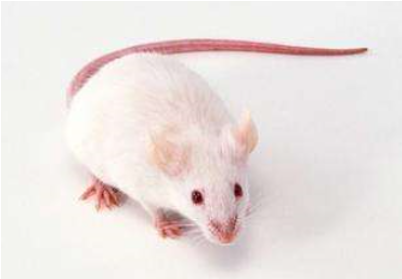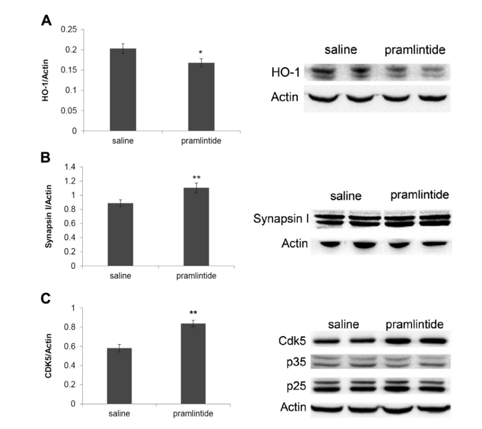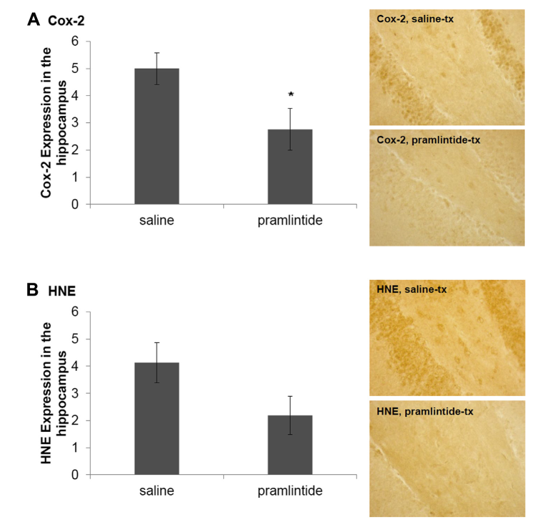Senescence-accelerated Prone 8 Mouse Model
The senescence-accelerated mouse (SAM) models were developed through phenotypic selection from a genetic pool of AKR/J mice in early 1980. The SAM strains have been used as models for studying age-related disorders and consist of nine major senescence accelerated mouse-prone (SAMP) sub-strains that undergo accelerated aging and three senescence accelerated mouse-resistant (SAMR) sub-strains that undergo normal aging process. Among them, SAMP8 mice mimic several features of Alzheimer's disease, such as cognitive impairment and Aβ deposition. In addition, there are alterations of genes and proteins relating to neuroprotection, signal transduction, immune response, energy metabolism, mitochondrial function in the brain of SAMP8 mice.
Creative Bioarray focuses on drug research and development services and helps customers evaluate the drug efficacy and study the associated pathological mechanisms of AD by SAMP8 mouse model.
 Figure. 1. SAMP8 mice
Figure. 1. SAMP8 mice
Our Capabilities
- We offer SAMP8 mouse model to screen potential drug candidates for treatment of Alzheimer's disease.
- We provide comprehensive behavioral and cognitive testing on AD model and the drug screening.
- We utilize LTP (long-term potentiation) assay to evaluate your preclinical drug candidates against the synaptic impairments in animals.
- We evaluate anti-oxidative stress in the brain of animals treated with drug candidates.
- We assess various biomarkers through WB, IHC, ELISA, sequencing, etc.
Assays available
- Learning and memory deficits tests
- Synaptic impairment
- Oxidative stress
- Neuroinflammation
- Glycogen synthase kinase-3 beta (GSK3β)
- Neuronal loss
- β-AP level
- Plaque load
- β-sheet load
- pE(3)-Aβ load
- Enzyme activity related to cholinergic system
- NMDA receptor function and excitotoxicity
- Mitochondrial dysfunction
- Brain slice staining and synaptic electrophysiology
- Blood brain barrier homeostasis
- Cerebral vascular angiopathy (CAA)
With extensive experience in the field of AD, we are confident to help you to overcome any upcoming challenges. Our experts are fully capable of customizing our protocols and assays to meet your specific needs. With our help, we wish to facilitate your research with high efficiency.
Study examples
 Figure. 2. Western blots of hippocampal tissue from SAMP8 mice chronically treated with pramlintide demonstrated. (A) decreased hippocampal expression of the cellular stress marker heme-oxygenase-1 (HO-1) (p = 0.035), (B) decreased synapsin I expression (p = 0.004), and (C) increased expression of cyclin-dependent kinase-5 (CDK5) (p = 0.002). Pramlintide treatment did not have a significant effect on the expression of p35, p25, or the p25/35 ratio (p > 0.05). Results are depicted as mean±standard error of mean (SEM). (Student t test, * p < 0.05, ** p < 0.01; n = 7-10 per group). Abbreviations: HO-1, heme-oxygenase-1; SEM, standard error of mean.
Figure. 2. Western blots of hippocampal tissue from SAMP8 mice chronically treated with pramlintide demonstrated. (A) decreased hippocampal expression of the cellular stress marker heme-oxygenase-1 (HO-1) (p = 0.035), (B) decreased synapsin I expression (p = 0.004), and (C) increased expression of cyclin-dependent kinase-5 (CDK5) (p = 0.002). Pramlintide treatment did not have a significant effect on the expression of p35, p25, or the p25/35 ratio (p > 0.05). Results are depicted as mean±standard error of mean (SEM). (Student t test, * p < 0.05, ** p < 0.01; n = 7-10 per group). Abbreviations: HO-1, heme-oxygenase-1; SEM, standard error of mean.
 Figure. 3. (A) Chronic pramlintide treatment decreased expression of the inflammatory marker cyclooxygenase 2 (COX-2) in the hippocampus as detected by immunohistochemistry (p = 0.042). (B) There is a trend toward decreased expression of the oxidative stress marker 4-hydroxynonenal (HNE) in the hippocampus of pramlintide-treated mice (p = 0.090). The results are depicted as mean±standard error of mean (SEM). (Student t test, * p < 0.05; n = 5-6 per group). Abbreviations: COX-2, cyclooxygenase 2; HNE, 4-hydroxynonenal; SEM, standard error of mean.
Figure. 3. (A) Chronic pramlintide treatment decreased expression of the inflammatory marker cyclooxygenase 2 (COX-2) in the hippocampus as detected by immunohistochemistry (p = 0.042). (B) There is a trend toward decreased expression of the oxidative stress marker 4-hydroxynonenal (HNE) in the hippocampus of pramlintide-treated mice (p = 0.090). The results are depicted as mean±standard error of mean (SEM). (Student t test, * p < 0.05; n = 5-6 per group). Abbreviations: COX-2, cyclooxygenase 2; HNE, 4-hydroxynonenal; SEM, standard error of mean.
Quotation and ordering
If you have any special needs or questions regarding our services, please feel free to contact us. We look forward to cooperating with you in the future.
Reference
Adler BL et al. Neuroprotective effects of the amylin analogue pramlintide on Alzheimer's disease pathogenesis and cognition. Neurobiology of Aging. 2014; 35: 793-801.